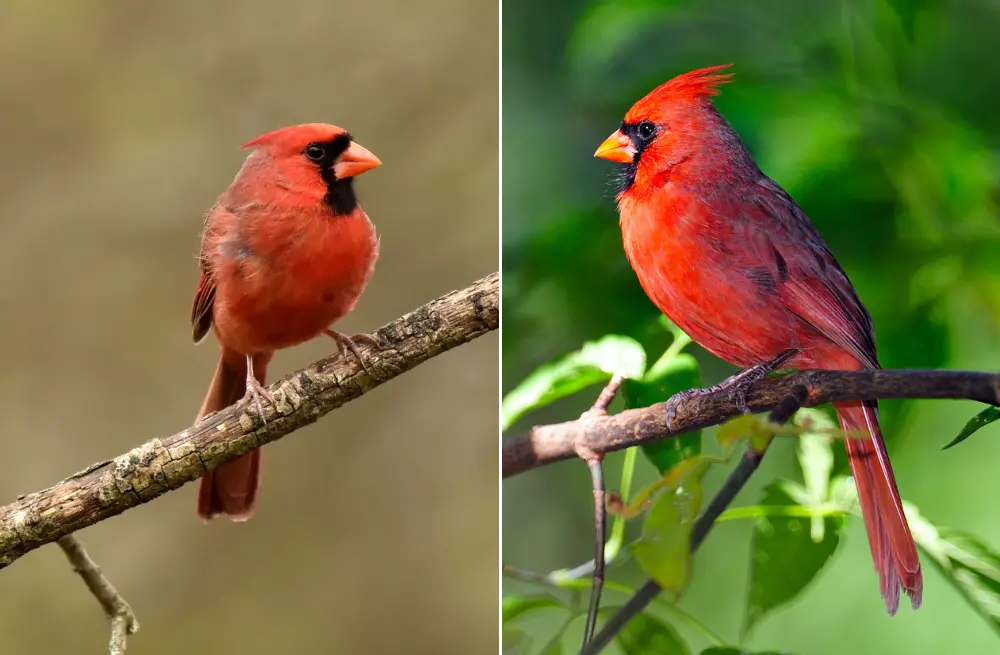Cardinal birds, with their vibrant red plumage and distinctive crest, are among the most recognized and admired birds in North America.
Their striking appearance makes them easily noticeable, but it also puts them at risk from various predators. Like many other small birds, cardinals must constantly be on alert and employ various defensive strategies to ensure their survival.
Throughout the different stages of their lives, from fragile eggs in a nest to mature adults, they face threats from a diverse range of predators. These threats can come from the sky, ground, or even within trees.
The surrounding environment, whether it’s a dense forest, suburban backyard, or urban park, can also influence the types of predators they encounter. Understanding the key predators of cardinal birds is essential not only for bird enthusiasts but also for those looking to create bird-friendly habitats.
What Eats the Cardinal Bird?
Cardinal birds, like many other small birds, face a variety of predators throughout their lives. The key predators of cardinal birds include:
Domestic Cats
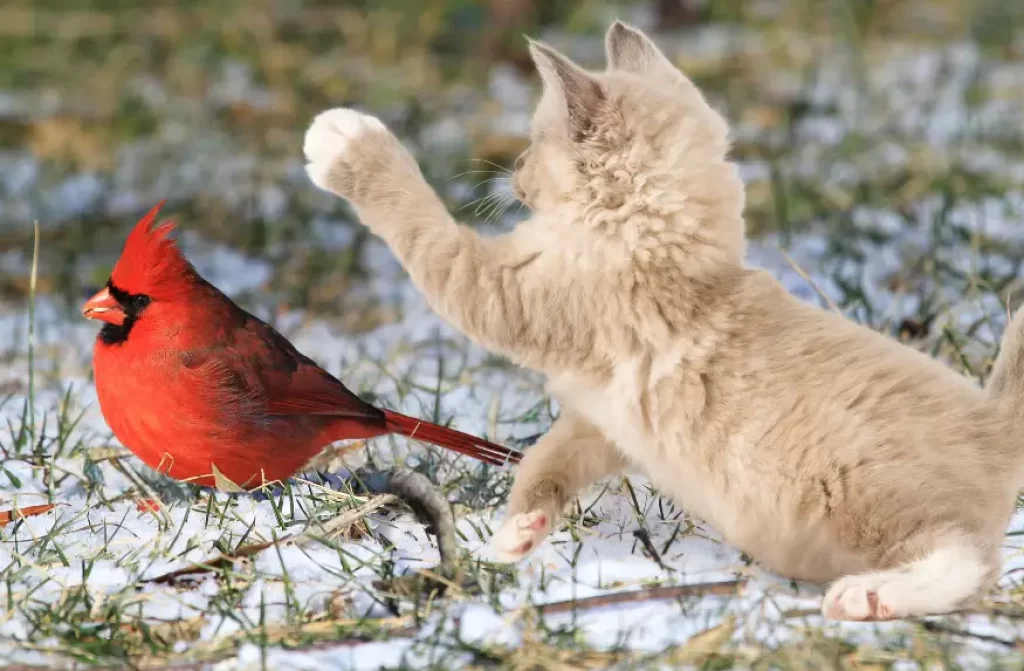
Domestic cats, or Felis catus, have a deep-rooted predatory instinct. Historically, they were domesticated to control pests, a testament to their natural hunting prowess. In modern times, many cats, particularly those that are allowed to roam outdoors, pose a considerable threat to a variety of wildlife, and songbirds like cardinals are no exception.
Even well-fed domestic cats will hunt, as the act is often driven more by instinct than by hunger. Their silent, stealthy approach, paired with quick reflexes, makes them formidable predators. Birds feeding on the ground or fledglings learning to fly are particularly vulnerable.
Moreover, it’s worth noting that while hunting provides mental and physical stimulation for the cat, it can have a detrimental impact on local bird populations. Some studies suggest that free-roaming cats are responsible for billions of bird deaths annually in certain regions.
Given this, bird enthusiasts and conservationists often advocate for keeping cats indoors or in enclosed outdoor spaces to protect avian populations and ensure the safety of the cats themselves.
Birds of Prey
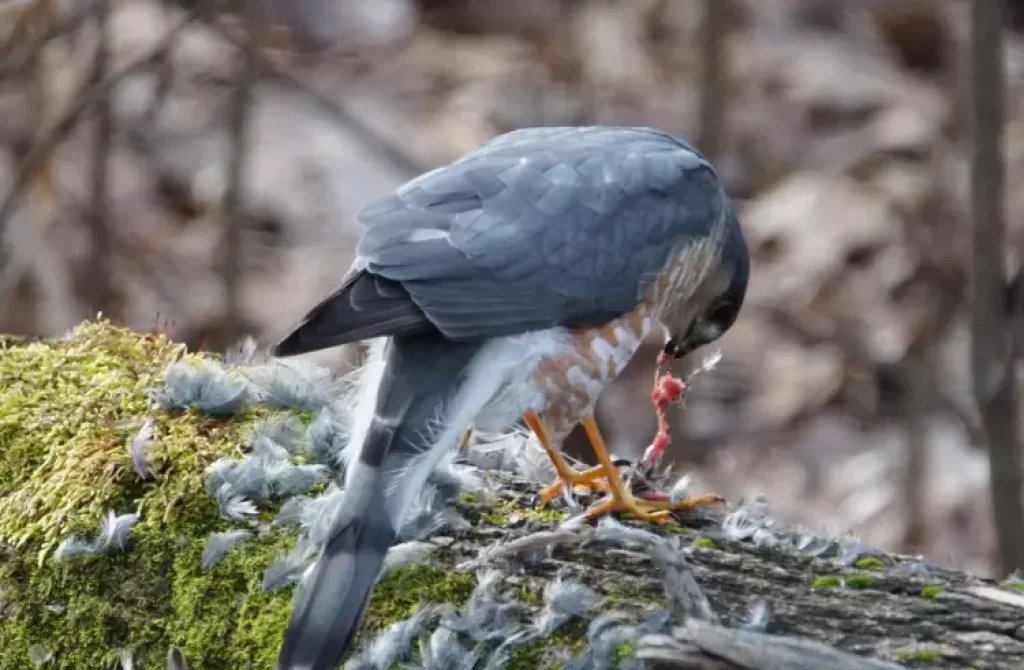
Several raptors hunt smaller birds, including cardinals. Cooper’s hawks and sharp-shinned hawks are among the most common avian predators of cardinals, especially in suburban and urban settings.
Both species are expert bird hunters, utilizing their agile flight capabilities and keen eyesight to spot and pursue their prey.
These hawks often use the element of surprise to their advantage, swiftly navigating through trees and shrubs to catch unsuspecting birds off-guard.
Their long legs and sharp talons are specially adapted to snatch birds in mid-air or from branches. Aside from Cooper’s and sharp-shinned hawks, other birds of prey like the merlin and the peregrine falcon have been known to prey on smaller birds, although cardinals are not their primary targets.
In rural areas, owls, such as the barred owl or the great horned owl, may also pose a threat during the night. For cardinals and other songbirds, the presence of these raptors means constantly being vigilant and having an escape strategy ready at a moment’s notice.
The dense foliage, from which cardinals often feed and take refuge, provides some protection against these aerial hunters.
Snakes
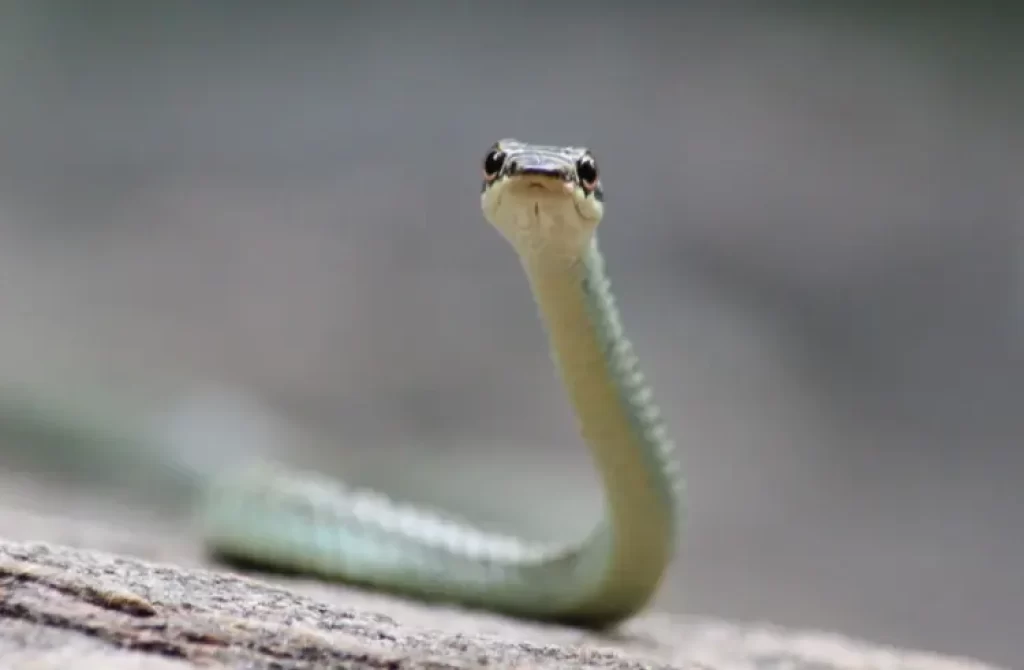
Tree-dwelling snakes can be a threat to cardinal nests, consuming eggs and nestlings.
Snakes, particularly those that are arboreal, have evolved to become adept climbers, easily navigating the branches and trunks of trees in search of food. Species such as the rat snake, black racer, and corn snake are known to raid bird nests.
Their stealthy and silent movement allows them to approach nests undetected. For a cardinal, the presence of a snake near its nest can be a dire situation, as these reptiles can swiftly consume all the eggs or fledglings, negating the hard work of the parents.
Cardinals, like other birds, employ various strategies to deter these slithering predators. They may choose nesting sites with fewer branches leading to the nest, making it harder for snakes to access.
Additionally, cardinals are often very vigilant during the nesting period, with both parents taking turns watching over the nest. If a snake approaches, adult cardinals can become quite aggressive, diving and pecking at the intruder in an attempt to drive it away.
Despite their best efforts, the silent threat of tree-dwelling snakes remains a constant challenge during the breeding season.
Squirrels
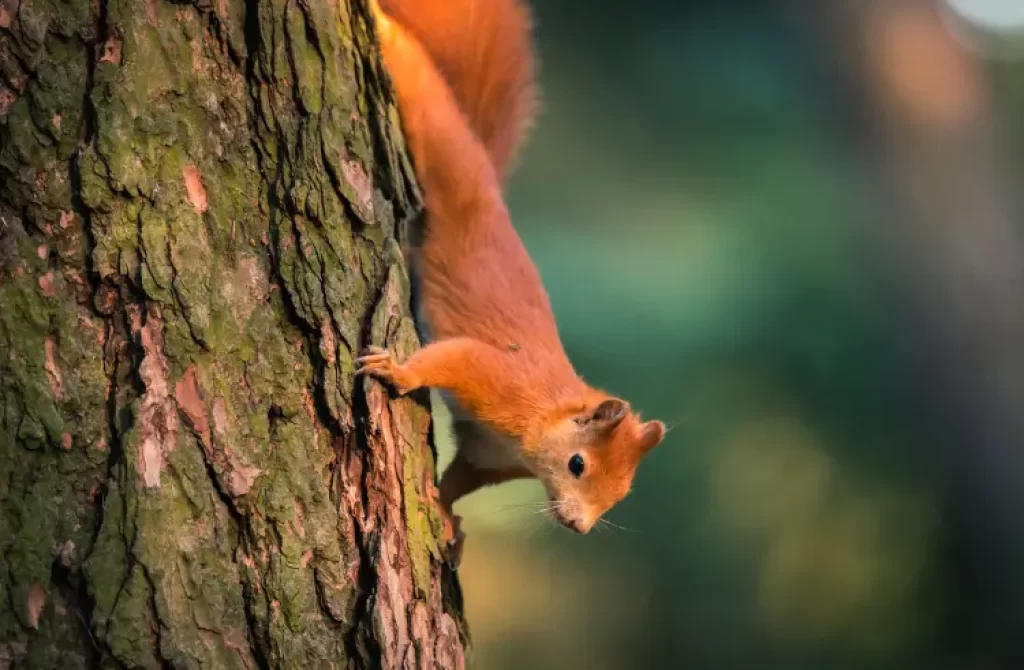
At a casual glance, squirrels, with their bushy tails and inquisitive nature, appear to be the quintessential nut and seed gatherers.
And largely, they are. These agile rodents, belonging to the Sciuridae family, are best known for their penchant for acorns, nuts, and seeds. However, their dietary habits encompass more than just plant material.
Being opportunistic feeders, squirrels can sometimes venture beyond their typical vegetarian menu. During certain times of the year or in situations where food is scarce, squirrels may display more carnivorous tendencies.
Bird nests can become prime targets. Eggs, rich in nutrients, and vulnerable fledglings can be tempting sources of protein and fat.
Cardinals, with their ground-based nests or nests in low shrubs, can be especially susceptible to such predation.
Though it might be unsettling to think of these playful backyard visitors as potential threats to songbirds, it’s essential to remember that nature is multifaceted. Squirrels, in their pursuit of sustenance, act out of instinct and survival, much like any other creature in the wild.
Raccoons
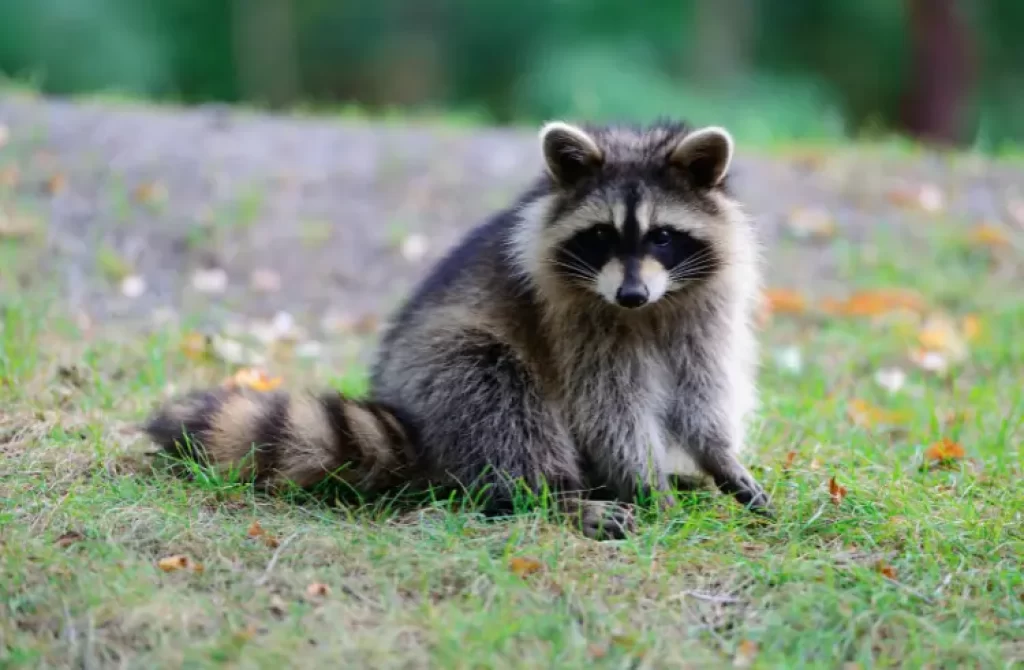
Raccoons, with their dexterous paws and keen sense of smell, are versatile opportunists when it comes to feeding. Their nocturnal habits, combined with a natural curiosity, often lead them to explore various food sources, including bird nests.
Cardinals, with nests often positioned in dense shrubbery or low trees, can become unintended targets of a raccoon’s nightly forage.
Unlike some predators, raccoons are not primarily bird hunters, but the allure of an easy meal, like eggs or helpless nestlings, is too tempting to resist.
Their climbing prowess allows them to navigate branches with ease, and their tactile fingers can deftly handle eggs or young birds.
To combat this threat, cardinals strategically place their nests in locations that may be difficult for raccoons to access. Furthermore, the protective behavior of the parent cardinals can deter some predators.
However, the adaptability and persistence of raccoons mean that they remain a notable threat to cardinal nests, especially in areas where these mammals are abundant and have become accustomed to human presence and the associated food opportunities.
Crows and Blue Jays
Crows and Blue Jays, while strikingly different in appearance, share a cunning and opportunistic nature that places them among the more adaptable avians in the bird kingdom.
Crows
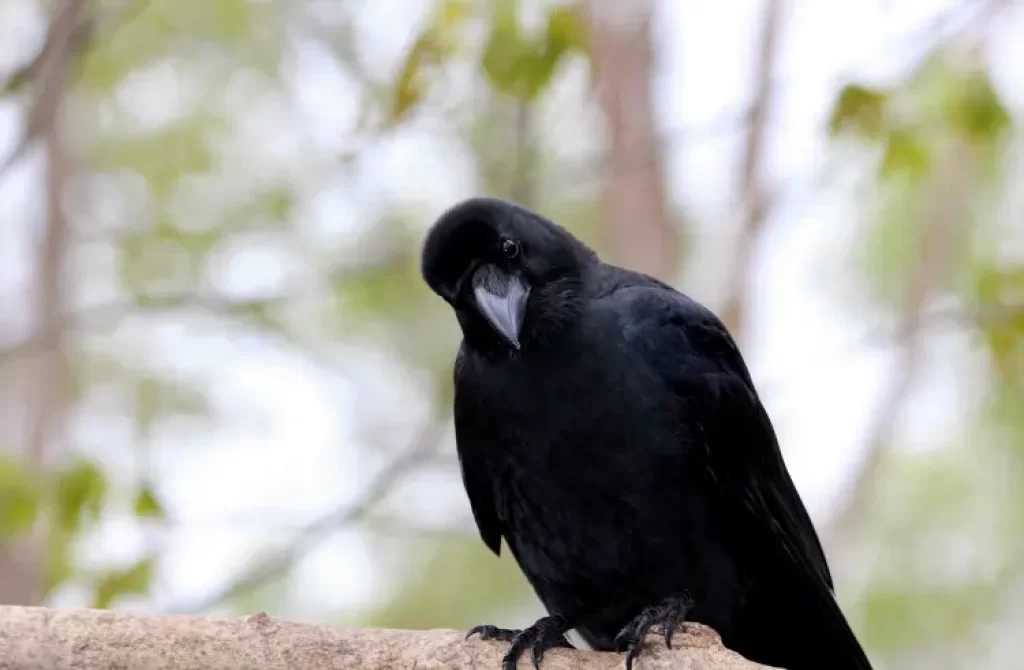
Members of the corvid family, crows are renowned for their intelligence and adaptability. These sleek, black birds exhibit behaviors that highlight their problem-solving capabilities. When it comes to diet, crows are omnivorous and will consume practically anything, from insects and grains to fruits and small animals.
Unfortunately for songbirds like cardinals, this also means that crows won’t shy away from pilfering nests. A crow’s keen eye and sharp beak make it easy for them to snatch eggs or defenseless chicks when parents are away.
Blue Jays
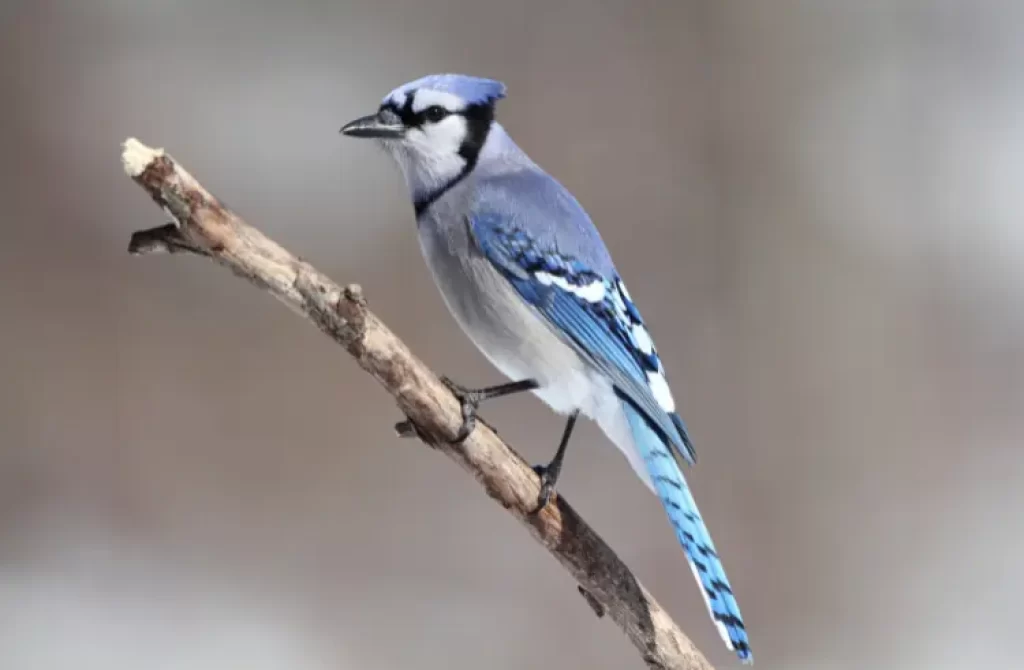
Sporting a vibrant blue hue and a crest that adds to their flamboyant presence, Blue Jays are equally crafty. Part of the corvid family as well, they’re notorious for their raucous calls and aggressive behaviors, especially during breeding seasons.
Although seeds, nuts (particularly acorns), and fruits constitute a significant part of their diet, Blue Jays have been observed raiding the nests of other birds. Their nimbleness and agility, combined with a sharp beak, enable them to extract eggs or young birds with relative ease.
Foxes
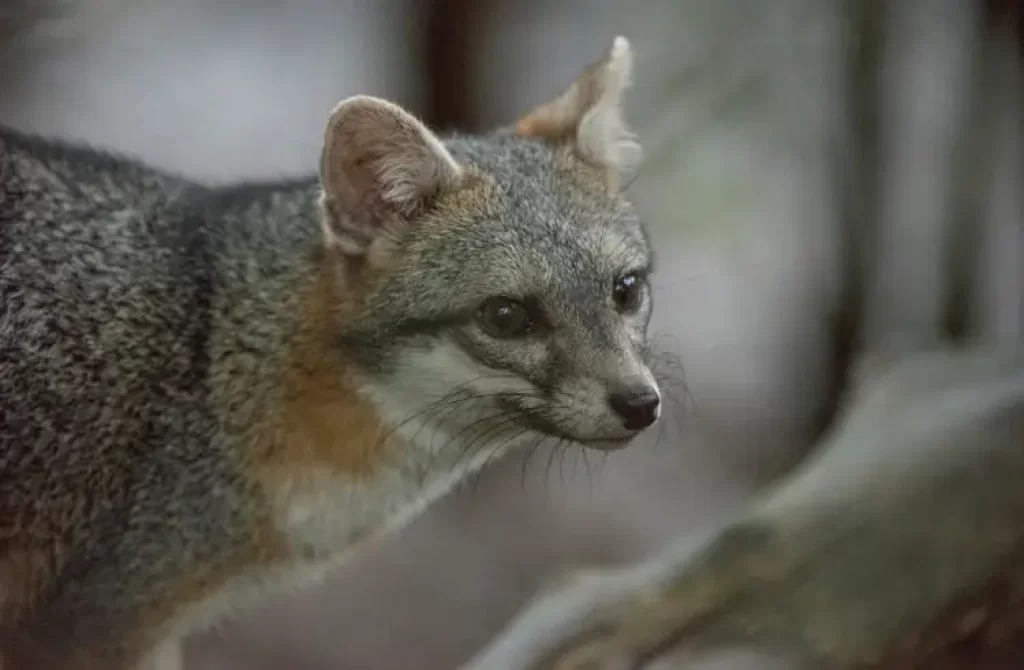
Foxes, predominantly red foxes and gray foxes, are cunning and adaptable predators known for their diverse diet. While their primary food sources are small mammals like rodents and rabbits, they won’t shy away from an opportunity to diversify their intake when the situation presents itself.
Birds, particularly ground-nesting species, can occasionally fall victim to these opportunistic predators. Cardinals, however, usually nest off the ground in dense shrubberies or low branches, which provides them some protection from terrestrial predators like foxes. Still, a fox might attempt to catch an adult cardinal, especially if it’s foraging on the ground or if other food sources are scarce.
It’s worth noting that foxes would more likely encounter cardinals inadvertently rather than actively hunt them. The primary threat from foxes would be in areas where their natural habitat overlaps with spaces frequented by cardinals, such as the edges of woodlands or in urban settings with patches of green spaces.
Cardinals, being vigilant and agile, often escape such threats by taking swift flights or seeking refuge in dense vegetation. However, in the wild, the dynamic between predator and prey is always evolving, with each trying to outsmart the other for survival.
What Animals Prey On Cardinal Eggs?
Cardinal eggs, nestled in the relatively low branches and shrubs, are susceptible to a variety of predators. Among the primary culprits are blue jays and crows, both of which are known to raid nests of smaller birds. Additionally, snakes, particularly those that can climb trees and shrubs, pose a significant threat to cardinal eggs.
Mammalian predators, such as squirrels and raccoons, are also known to feed on eggs when they come across them. In urban and suburban settings, domesticated animals, especially cats, can be potential threats, stalking bird nests within their reach.
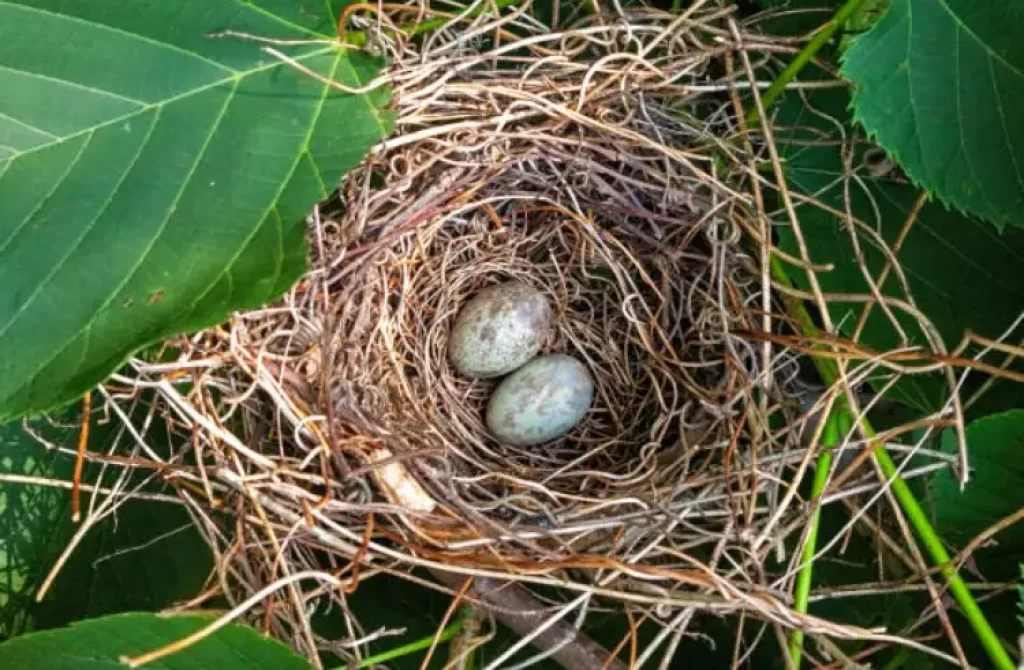
Furthermore, some species of larger birds, like hawks or owls, might prey upon adult cardinals, indirectly affecting the survival of their eggs.
Overall, the nesting habits and location of cardinals, while offering some protection, do make their eggs vulnerable to a range of opportunistic predators.
Wrapping up…
The majestic cardinals, despite their dazzling red display, are not exempt from the relentless circle of life in the wild. These beauties face persistent threats from natural adversaries such as hawks, owls, and even our household pets.
For those of us who hold a soft spot for cardinals, it becomes our responsibility to ensure their safety. Simple measures like keeping pet cats indoors and positioning feeders and nesting areas out of reach from predatory threats can make a world of difference.
We trust this piece has enlightened you about the cardinal’s challenges and offered guidance on safeguarding them. Should you have personal anecdotes or successful strategies on protecting these feathered gems, we’d be delighted to hear them. Continue to invite and cherish the company of these splendid cardinals in your outdoor space.
You may also like:
Kenno Marques is a self-taught English speaker deeply passionate about nature and wildlife. He dedicates his time to scouring the web for the latest animal news and engaging content, which he shares on various websites. Fluent in three languages, Kenno is currently on a journey to master German. His commitment to fostering an understanding of the natural world makes him a valuable contributor to the online community.



